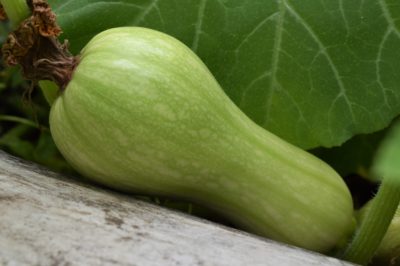Prepare the Soil
Buttercup squash plants require a loose, fertile soil. Before planting, add to the soil a few inches of compost. Mix the compost in the soil to a depth of 12 inches. At this point, add an organic fertilizer or aged manure. The large, thirsty root system of squash plants will soak up the nutrients producing lush plants and tasty buttercup squash.
When to Start Buttercup Squash
Buttercup squash can be planted outdoors when all danger of frost is passed. A safe time to plant should be about two weeks after the last average frost date for your area. The air temperature should consistently be 65°F (18°C) or higher. The soil 2 inches below the surface needs to be at least 60°F (16°C) before the seeds will germinate.
Direct Sowing of Seeds
When the weather warms up, it’s time to sow buttercup squash seeds into the garden or outdoor containers. If planting in rows, sow 1 inch deep a group of three seeds 3 feet apart. When the seedlings have a few true leaves, cut at the soil’s surface the weakest seedlings in each grouping. Rows should be about 4-5 feet apart.
Having adequate space between plants is crucial. The Burgess Buttercup squash has a spread of 8-15 feet. Planting on hills 4-8 feet in diameter gives the plants space to sprawl. Sow six to eight seeds per hill to a depth of 1 inch. When the seedlings have true leaves, thin to the best two or three plants 36 inches apart.
Grow from Transplants
Some gardeners, especially those with short growing seasons, prefer to start transplants indoors two to four weeks before the last frost. Here are the steps to growing healthy transplants:
- Moisten seed starting mixture.
- Fill 5-inch or deeper containers with quality seed starting mixture.
- Sow one or two seeds 3/4 inch deep in each container.
- Place containers in a warm room or greenhouse.
- Place seedling containers under fluorescent lights for about 15 hours per day.
- Keep soil moistened not soggy.
- When seedlings have one or two true leaves, thin to one seedling per container.
- If outdoor air and soil temperature is right, plant when true leaves appear.
Caring for Buttercup Squash Plants
From seedlings to mature plants, the plants need the proper amount of water and sun. Also, side-dress plants with an organic fertilizer when the blossoms appear.
